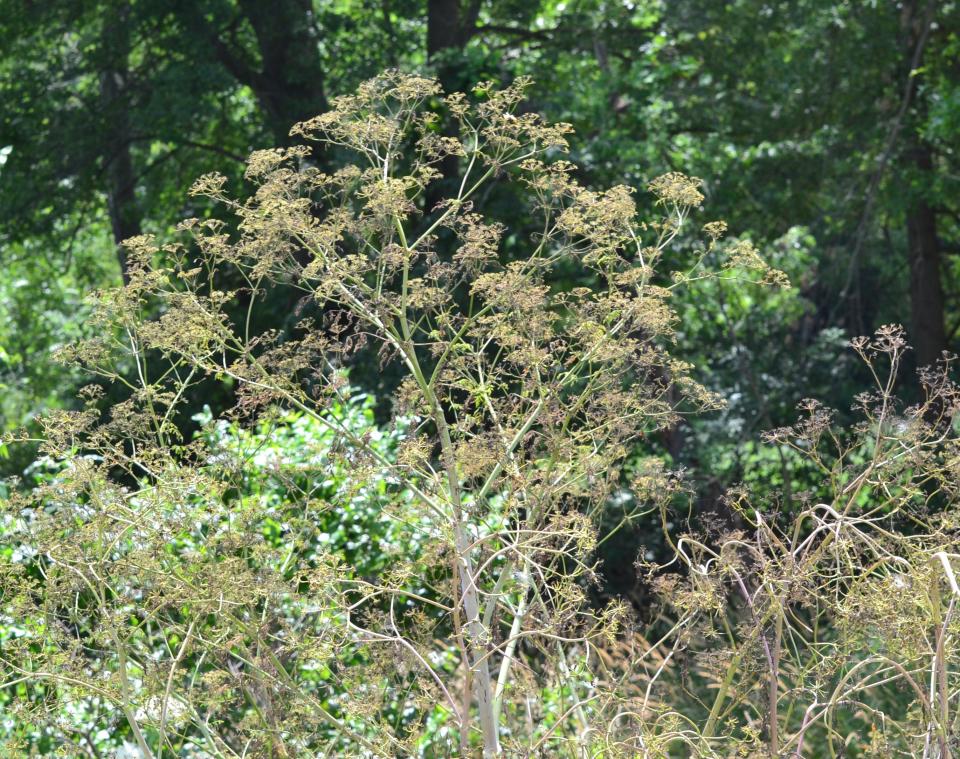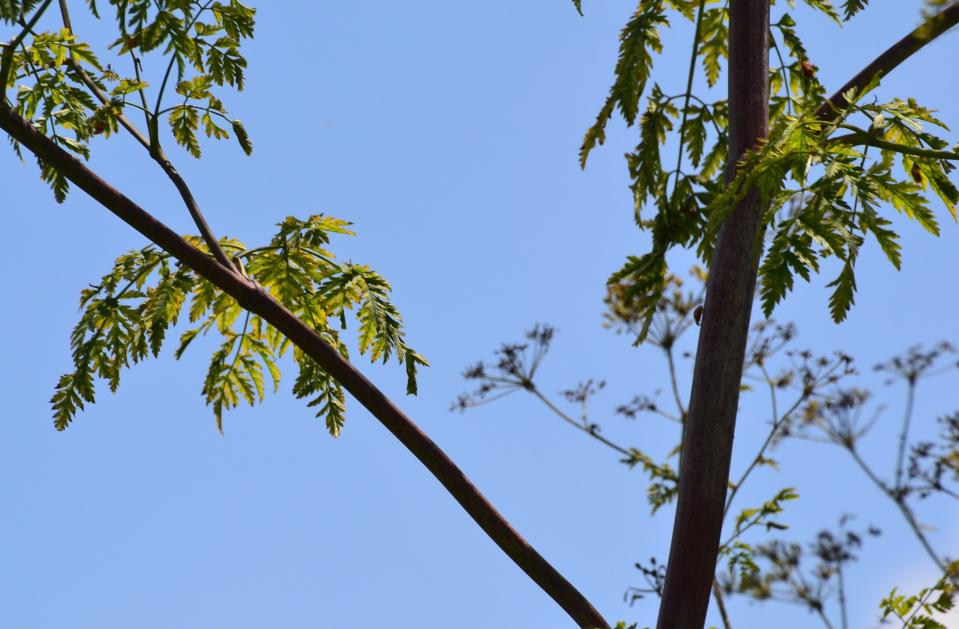A Stroll Through the Garden: What you should know about giant hogweed and poison hemlock
A few years ago, my dad brought a huge dead seed head from the top of what looked like giant hogweed. My dad said that he had seen a number of these plants growing almost like a grove of trees. The biggest clues were the 15 feet height of the plants. Another identifier of giant hogweed is the 2-to-4-inch hollow stem that's red to purple in color. This same stem has little bristles. I had a friend in Bucyrus that had many of these awful weeds or a relative of them in her gardens, and I dealt with the plants shortly after I wrote my initial column.
I have been reading over the years that this serious weed has been pushing its way through our state. One of the challenging things about this weed is that it is easily confused with any number of other relatives of this plant. But right now, as we go about the process of pulling weeds out of our gardens, we should get out there knowing that what we are pulling out is not going to hurt us. My friend was in the process of cutting the flowers off the stems so they don’t produce any more seed; she was using gloves. I’ve heard this hogweed is even worse that poison ivy.
Giant hogweed can cause a problem called phytophotodermatitis. Sounds bad, doesn’t it? It looks even worse from the pictures I’ve seen. If the sap inside the plant gets on your skin, it can cause your pigment to change and for you to become extremely sensitive to the sun’s rays. Areas exposed on your skin can swell and blister and even cause a permanent scar. Get some of this sap in your eyes and you can suffer from temporary blindness and possibly permanent blindness. The shorter cousin, poison hemlock, can even kill you. Ancient Greeks used this compound to execute criminals or political prisoners.
More: Poison hemlock 'spreading like wildfire' across Ohio
Giant hogweed or Heracleum mantegazzianum is a native to the Caucasus Mountains in Europe. Hogweed has made it on the national noxious weed list, which means that this plant can harm you or livestock and is not a native. It has the ability to take over an area because it's very fertile. Snap dragons, giant hogweed and poison hemlock are biennials. As defined by the dictionary, a biennial takes two years to develop. Biennials' flowers can come to seed the second year. What I find kind of scary is that one plant of giant hogweed can produce as many as 20,000 seeds and poison hemlock can produce 38,000 seeds. For me each of the plants looks a lot like Queen Anne’s Lace on steroids, which makes sense in that all three are members of the Apiaceae family or the carrot family. So, one of the keys to identifying these plants is that you see a flower and leaf structure at times during the year similar to Queen Anne’s lace, but the leaves do vary as they are younger and older. One of the other key identifiers is the stem, which has purple areas and white hair. The middle of the stem is hollow.

Poison hemlock or Conium maculatum is not considered hazardous to touch for most people, although you should still be careful when handling it. It is poisonous if ingested. Socrates died from drinking tea from this plant after being accused of corrupting youth in Athens, Greece. If livestock or other wild animals eat this plant, they also die. This European native produces seeds that fall close to the plant. Poison hemlock came here from Europe in the 1800s, which puts it on the border of not being considered invasive, yet it is.
Giant hogweed was imported from Europe in 1917 and kept in some very upscale gardens in New York. Giant hogweed as a landscape designer is a 15-foot tall plant with a variety of types of leaves and a little purple in the stem make this a potential plant of interest. This is just a little bigger than poison hemlock. Bottom leaves on giant hogweed can get up to five feet in size towards the end of the season when in moist fertile soils. This giant hogweed escaped cultivation and has found a certain amount of success in the wild. Now they are throughout the state.

The best ways to get rid of these toxic weeds are to mow this plant well before it has a chance to set seed. I suppose that within a few years of mowing these plants faithfully once a week there would be no seeds out there to grow. Regular ditch mowing will go a long way to controlling these noxious poisonous weeds. There are a number of chemicals that can kill these weeds.
Hope you have a nice stroll through your garden this week. If you have a problem, you can e-mail me at ericlarson546@yahoo.com. I shall do the best I can to answer the questions. You can comment on my column if you go to my website ohiohealthyfoodcooperative.org and find the link for comments. Thank you for your interest and all of your questions.
Eric Larson of Jeromesville is a veteran landscaper and gardening enthusiast and a founding board member of the Ohio Chapter of Association of Professional Landscape Designers.
This article originally appeared on Mansfield News Journal: The invasive giant hogweed and dangerous poison hemlock.

